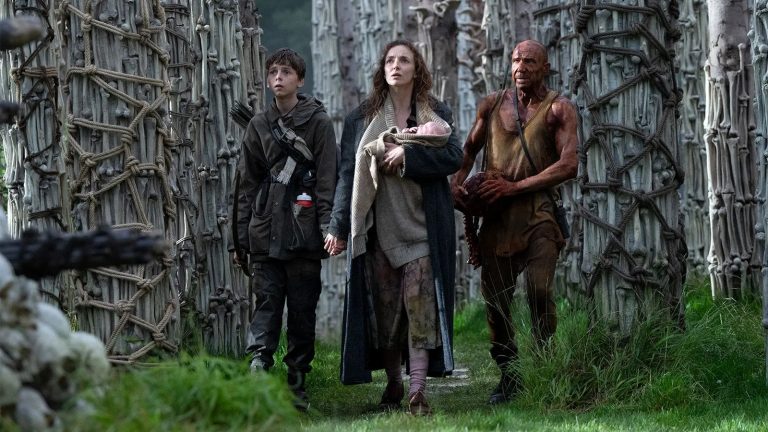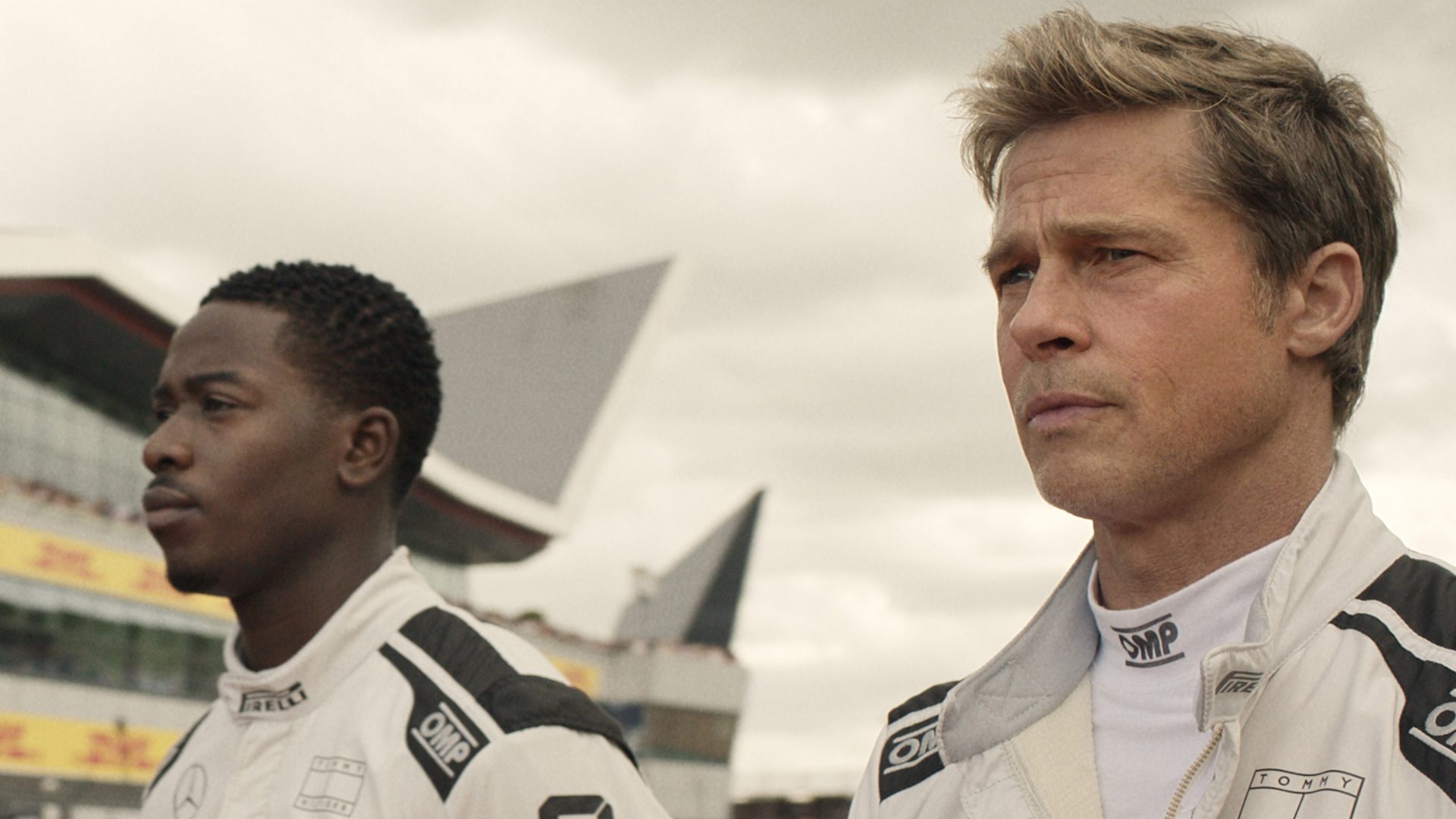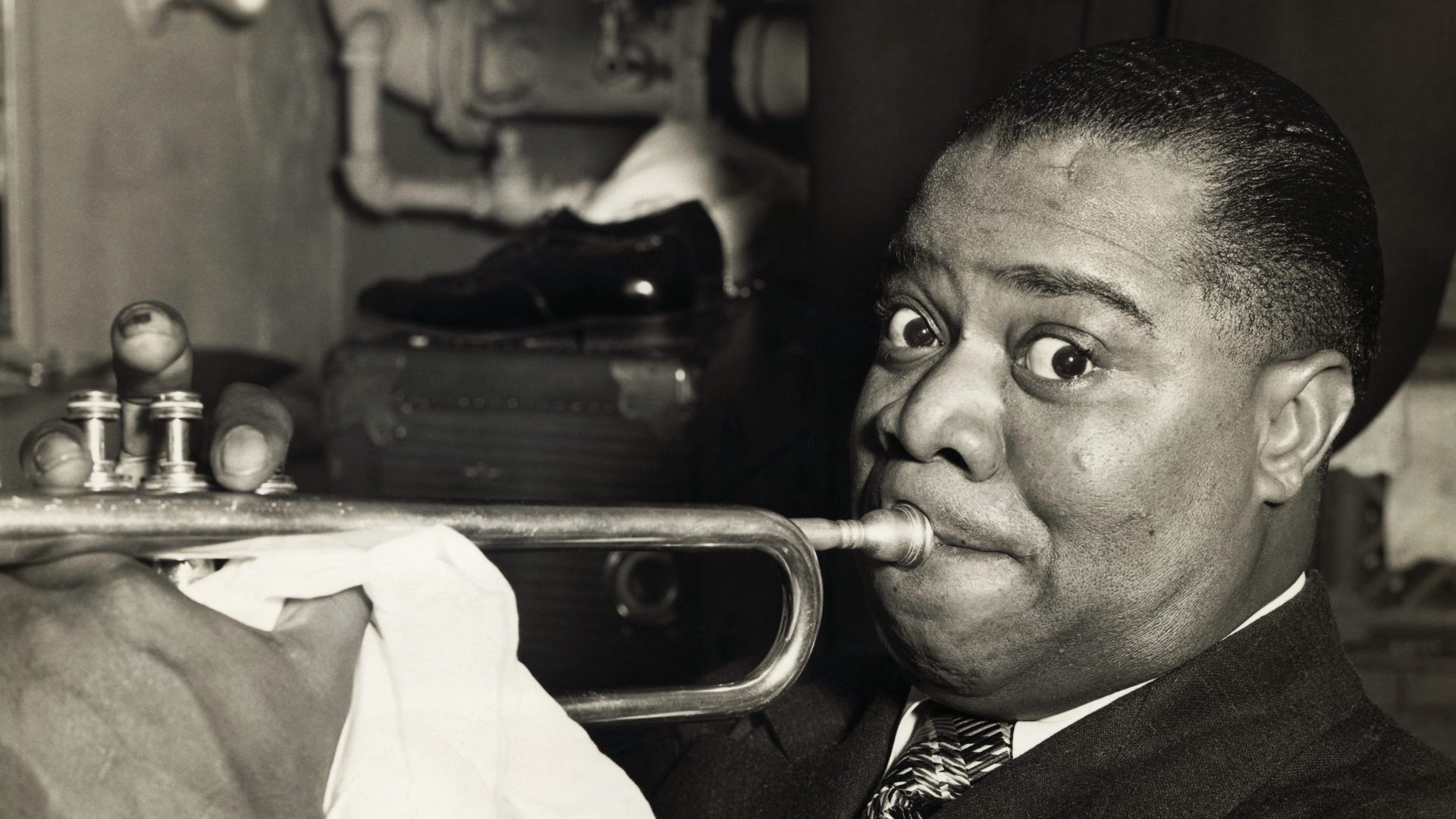FILM
F1 (General release)
To understand why this is such good film, let us go back in time to the 1980s when two hungry producers, Don Simpson and Jerry Bruckheimer reinvented the tentpole film with a series of box office hits: Flashdance (1983), Beverly Hills Cop (1984), Top Gun (1986) and The Rock (1996).
Their lethally successful philosophy – described in Charles Fleming’s classic biography of Simpson, High Concept (1998) – was that a mass-market film had to be reducible to a very simple idea: “hip Detroit detective goes to Hollywood”; “fighter pilots in a sports movie”; “working-class woman wants to be a ballerina”.
After a life of unrestrained debauchery, Simpson died aged 52 in 1996. But Bruckheimer has kept going and (along with Lewis Hamilton and Brad Pitt) is amongst the producers of F1. For all its cutting-edge technology, including smaller IMAX cameras installed inside the cars, and its video-game aesthetic, the film is pure retro: 1980s “high concept” at its very highest.
In this case, the sell could not be simpler. Sonny Hayes (Pitt) is an over-the-hill driver who takes what work he can get – even as a New York cabbie, we learn – decades after his Formula 1 dreams were dashed in a terrible accident. When we first encounter him, he is taking the night shift for a team in the 24 Hours at Daytona endurance race in Florida, to the pulsing beat of Led Zeppelin’s Whole Lotta Love.
Like Apollo Creed’s promoter in the original Rocky (1976), Sonny’s former team-mate Ruben Cervantes (Javier Bardem) tracks him down to a laundromat and invites him to bring some old-school brilliance to his ailing F1 team, APX. Ruben is already down $350 million. He needs a Hail Mary pass, thrown by a man-who-never-quite-made-it who now lives in a camper van.
Needless to say, this goes down badly with APX’s rising young star, Joshua Pearce (Damson Idris), who is unimpressed by the idea of a dinosaur-on-wheels as his team-mate and thinks Sonny is a reckless menace on the track. Meanwhile, the team’s technical director, Kate McKenna (Kerry Condon), tries to turn Ruben’s “shitbox” vehicle into a Grand Prix winner – and, against her better instincts, is increasingly attracted to Sonny.
The spectacle of a superstar-in-a-car naturally recalls Steve McQueen in Le Mans (1971). But the closer and more recent precedent is Tom Cruise in Top Gun: Maverick (2022), also directed by Joseph Kosinski, which, in style, narrative arc and cross-generational theme, is practically F1’s twin.
Just as Cruise and his co-stars were filmed in real fighter jets, Pitt and Idris are behind the wheel for much of the time (in modified Formula 2 cars), which gives cinematographer Claudio Miranda plenty to work with as the action shifts from Silverstone to Monza to Las Vegas.
In an era of faltering superhero franchises and studios desperately squeezing every last drop from expensive IP, F1 is a throwback to the age of the summer blockbuster in which (literally, in this case) the film was a vehicle for a true star. I have never watched a Formula One race in my life, but, for nearly three hours, this had me on the edge of my seat.
EXHIBITION
Kiefer/Van Gogh (Royal Academy, London, until October 26)
When Anselm Kiefer was 18, he was awarded a travel grant and decided to take a trip “in the footsteps of Van Gogh”, hitchhiking through the Netherlands and Belgium and from Paris to Arles. Thus began a lifelong relationship across time with the Dutch artist which continues to this day – Kiefer is 80 – and is celebrated in this stunning and imaginative exhibition.
“Contrary to what one might expect of a teenager,” the German painter and sculptor has said, “I was not overly interested in the emotional aspect of Van Gogh’s work or his unhappy life. What impressed me was the rational structure, the confident construction of his paintings, in a life that was increasingly slipping out of his control.”
Suggested Reading


The savage yet mystical 28 Years Later
At first glance, Kiefer’s monumental works – 14 of which are included here – share little with the 11 paintings and drawings by Van Gogh selected for this exhibition. But look closer and one sees not only direct acts of homage, as in Kiefer’s The Starry Night and The Crows (both 2019), the latter recalling Van Gogh’s cornfields; but also a shared preoccupation with landscape as a projection of human turmoil in Nevermore (2014) and The Last Load (2019).
The juxtaposition of genius is often illuminating: think of Douglas Hofstadter’s Gödel, Escher, Bach: an Eternal Golden Braid (1979) or the great Matisse Picasso exhibition at Tate Modern in 2002. In this case, Van Gogh is the prelapsarian artist who, for all his personal suffering, did not live to see the carnage of the 20th century.
The sheer violence of Kiefer’s core aesthetic, in contrast, springs from the postwar German psyche and the long shadow of the Holocaust. But he is also, as Simon Schama observes in the exhibition catalogue, capable of an “inspired playfulness”. A must-see exhibition, revealing the fruits of “a comradely apprenticeship that would undoubtedly have touched Van Gogh.”
STREAMING
Smoke (Apple TV+)
“Every fire starts small… no, that’s bullshit,” says arson investigator Dave Gudsen (Taron Egerton) in a noir-ish voiceover. “Whatever you do, whatever you know, however much… lifetime wisdom you’ve accrued, fire puts a lie to it all”.
Based on the acclaimed true crime podcast Firebug (2021), Denis Lehane’s terrific nine-part drama is a much darker exploration of humanity’s battle against the flames than, say, Backdraft (1991) or Chicago Fire (still going after 13 seasons). Fire, its narcotic appeal to pyromaniacs and the terrible price it exacts are visible everywhere: a lover lighting a cigarette, chicken flaming on a grill, sparks falling from above, candles on a birthday cake, all the way to melting human flesh.
In the fictional Pacific Northwest town of Umberland, Gudsen and his police detective partner, Michelle Calderone (Jurnee Smollett), are on the trail of two serial arsonists: “Milk Jug”, who uses containers full of gasoline, and “D&C,” short for “divide and conquer”, who ignites time-delayed blazes to distract the authorities from his true targets.
One of the fire starters is quickly revealed to the viewer (though not to Gudsen and Calderone) to be Freddy Fasano (Ntare Guma Mbaho Mwine, superb), a disturbed and reclusive worker at a fast-food joint. But this early disclosure is a feint, giving Smoke plenty of time to pursue multiple twists and turns, explore the respective backstories of the two investigators and nurture a genuinely unsettling mood of volatility and suppressed trauma.
“I’m invincible,” claims Calderone to a counsellor: but her face tells a very different story. And when one of the characters says of another “she eats souls”, we feel the biblical heat of a very different kind of inferno. In this respect, the series – another success for Apple TV+ – bears comparison with the gold standard of True Detective, season one (2014). Prestige television at its very best.
BOOK
Ignorance and Bliss: On Wanting Not to Know, by Mark Lilla (Hurst & Co.)
The Columbia University humanities professor Mark Lilla is one of the most consistently fascinating analysts of contemporary culture and its relationship to politics and social trends. The Ship-Wrecked Mind (2016) is perhaps the best account of the reactionary mentality since Albert O. Hirschman’s The Rhetoric of Reaction (1991); while The Once and Future Liberal (2017) was one of the first tracts to engage candidly with the clash between liberalism and identity politics.
In Ignorance and Bliss, Lilla asks: “How is it that we are creatures who want to know and not to know?” In a series of deeply erudite and sometimes whimsical pensées, he borrows and interrogates Nietzsche’s idea of the “will to ignorance”.
As pleasurable a book as it is to read, its message is a tough one: that, given the complex, baffling and often upsetting nature of the world, “there are things about it we would prefer not to have to recognize”. Everybody says that they want to know the truth. But do they?




